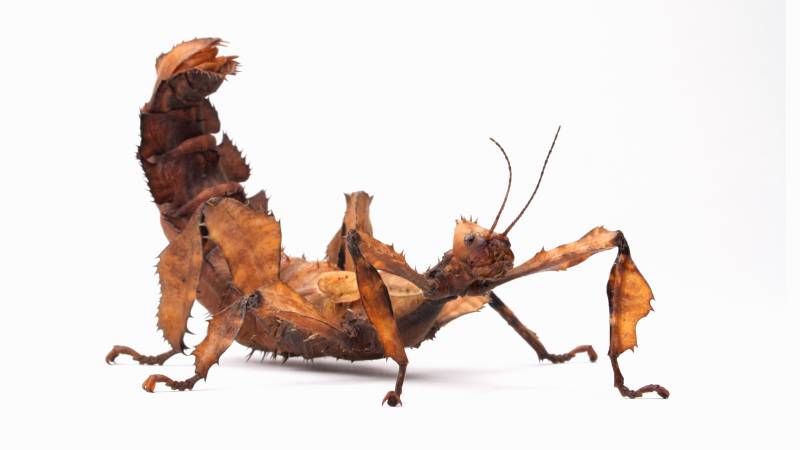Watch Deep Look’s first new video of 2022 here: Australian Walking Stick Insects Are Three Times Weirder Than You Think, and find out how Deep Look collaborated with talented Melbourne-based filmmaker Jordan Dean in this behind-the-scenes post. More about Deep Look’s winter lineup is below.
January 11 – Australian Walking Stick: It’s a master of deception, but a twig is just one of its many disguises. Before it’s even born, it mimics a seed. In its youth it looks and acts like an ant. Only when it has grown up does it settle into its final, leafy form. Along the way, it fools predators at every turn.
February 1 – Western Subterranean Termites: These winged creatures swarm en masse once a year, pushing through the damp earth from their underground tunnels to the outside world to mate and establish new colonies. Then they build tubes out of mud and saliva from their nest into your basement to explore what tasty wood you might have for them to eat.
February 22 – Red Cage Fungus: The red cage fungus explodes out of an egg-shaped casing and uses its goopy, smelly lattice structure to attract flies that will carry away its spores.
March 15 – Whip Scorpion: Also known as a vinegaroon, it’s as monstrous-looking as a scorpion, with an additional whip-like tail. But when it defends against predators like weasels and skunks, it doesn’t use venom. Instead, it aims its tail at their eyes and spritzes them with – you guessed it – vinegar.
About Deep Look
Launched in 2014, Deep Look is an award-winning YouTube science series produced by KQED. It has won 15 awards including: seven Northern California Emmys, three Society of Professional Journalists NorCal Excellence in Journalism Awards, four Jackson Hole Media Awards and one People’s Voice Webby Award. Deep Look’s production team includes: KQED climate reporter Laura Klivans, host and writer; Craig Rosa, series producer; Josh Cassidy, lead producer and cinematographer; Gabriela Quirós, coordinating producer; Mike Seely, producer and post-production coordinator; and Sevda Eris, audience engagement director. Each episode has an original score by Seth Samuel, as well as additional editing and motion graphics by Kia Simon. Many episodes also include special animations by Teodros Hailye. Deep Look connects with its audience on social media, through community events and through partnerships with renowned science centers and research institutions. Discover more at KQED.org/DeepLook.
About PBS Digital Studios
PBS has long brought the public original, thought-provoking programming. PBS Digital Studios takes that same mission and applies it to the internet age. Working with creators from across the web, its network of short-form video series showcases the best of the Internet while also celebrating the best parts of public television. PBS.org/DigitalStudios
Funders
Funding for Deep Look is provided in part by PBS Digital Studios. Deep Look is a project of KQED's digital production unit and is supported by the Dirk and Charlene Kabcenell Foundation, Campaign 21 and the members of KQED.
About KQED
KQED serves the people of Northern California with a public-supported alternative to commercial media. An NPR and PBS affiliate based in San Francisco, KQED is home to one of the most listened-to public radio stations in the nation, one of the highest-rated public television services and an award-winning education program helping students and educators thrive in 21st century classrooms. A trusted news source and leader and innovator in interactive technology, KQED takes people of all ages on journeys of exploration — exposing them to new people, places and ideas. KQED.org
